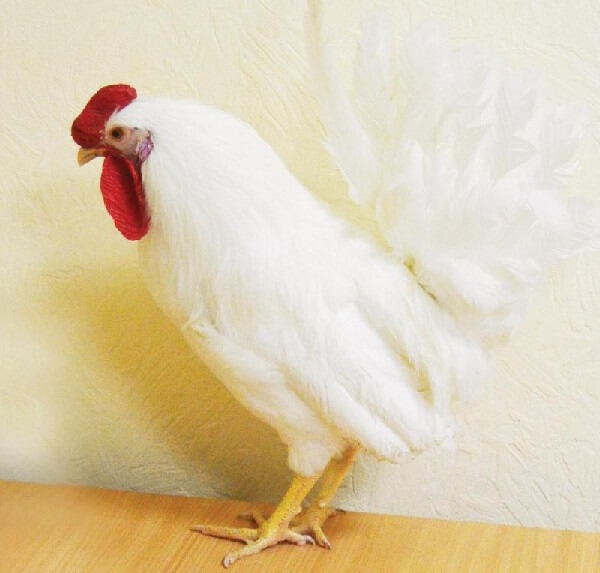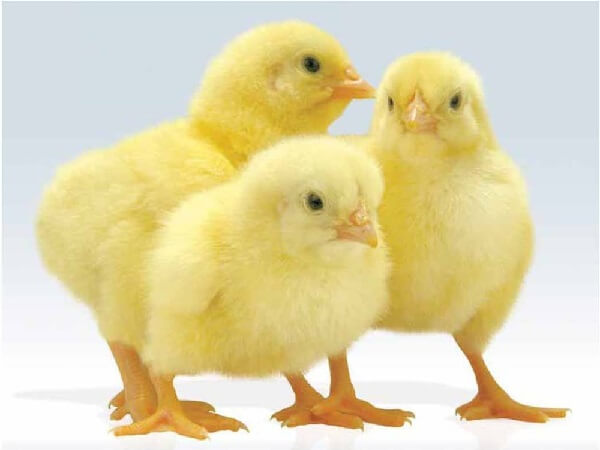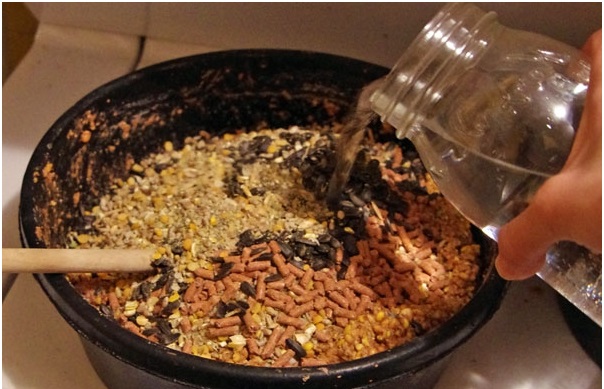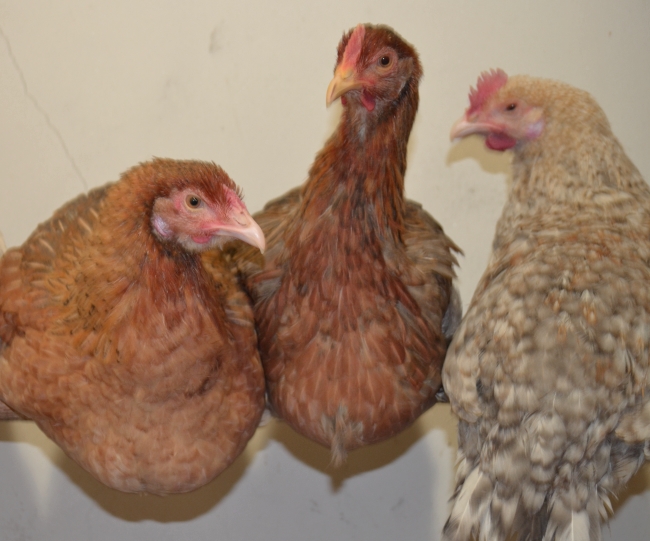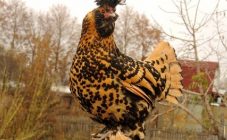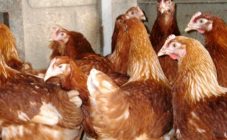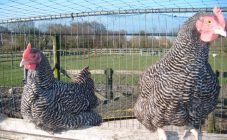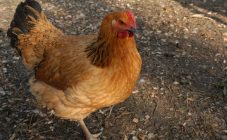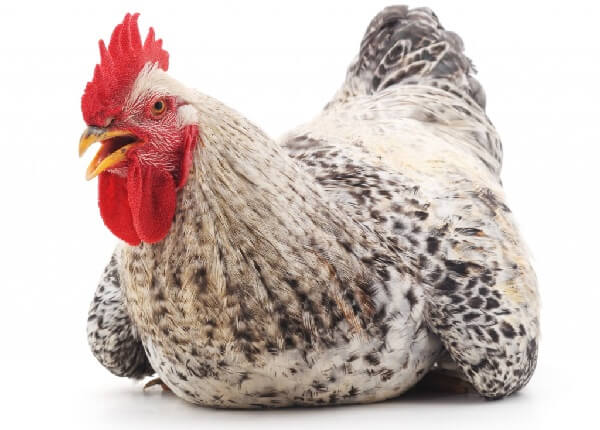Content:
Having decided to start chickens in a subsidiary farm, a novice poultry breeder always faces a choice: which breed is better. So that it is with good egg production, vitality and is not very demanding in care. Modern poultry houses are increasingly leaning towards hybrid chicken breeds. Dekalb is one of them. There are two varieties of the Decalb breed: Decalb White (white) and Decalb Brown (brown). All parameters for both hens are the same, the only difference is in the color of feathers and eggs.
Breeding history
This species was bred by American breeders from the Dekalb Poultry Research company. We got this species as a result of crossing of DU12 cross-breed males and DU34 females. The main goal set for the breeders was to increase productivity, and it should be noted that they coped with the task. Dekalb chickens lay more than 300 eggs per year, the average weight is 63 grams.
Chickens Dekalb White: description
This breed of chickens has no distinctive features. An ordinary white, if not snow-white hen, not very large, with a small head crowned with a leaf-shaped comb, which often hangs to the side. The earrings and comb have a ruby color. The skin on the muzzle and lobes are pink. The long neck is covered with sufficiently developed feathers. The eye color is orange-red. The beak is graceful, yellow, straight. The body is almost vertical, with a straight back and slightly protruding chest, well-formed belly. The tail is not wide, developed. The legs are of medium length, their muscles are underdeveloped. With long yellow paws, four toes on the paws.
By weight, the hens are slightly more than 1.5 kg, while the males do not exceed 2 kg.
Character
Chickens of the Decalb White breed differ from other crosses in character. They are calm, peaceful. They are grown on an industrial scale in cages, but they feel great at home. They absolutely do not conflict with other individuals in the poultry house or chicken coop.
Productivity
For the first time, these hens lay eggs at four to five months. From that time on, for one and a half years, their egg production is very high, and then productivity decreases.
Molting
During the molting period, egg production may decrease slightly. This happens at 65 weeks. They do not stop laying at all, but somewhat slow down the laying of eggs. After the swirls are molded, the productivity returns to the previous channel. For faster feather growth, chickens can be given pentovite and fodder sulfur, diluted according to the instructions for the preparation.
Incubation instinct
The maternal instinct of these chickens is completely absent. In this regard, they are bred either with the help of an incubator, or with the help of another chicken, laying eggs on it. Although this trait in behavior is not a disadvantage, the breed was bred solely to increase egg production.
Chicks
Raising chickens is a very troublesome business. Dekalb crumbs are no exception. Although, in principle, the survival rate for Dekalb White is high: up to 96%.
A newborn chicken weighs 50-55 g and is covered with fine fluff. In the first decade, its weight increases by 15-20 g, and at two weeks of age its weight is already 125 g.Natural selection takes place in the first two months, that is, the weakest die, there should be no further losses, however, under improper conditions of detention, mortality is possible. At the age of one and a half months, the weight of the chickens approaches 0.5 kg. By puberty, young chickens weigh about one 1.2 kg and for another six months they slowly gain weight.
Chick care
Proper care and feeding from the first day of life is the key to healthy and productive chickens. In the first ten days, chicks need warmth, therefore, it is better to keep them in a special brooder at an air temperature of about 30-32 degrees and a humidity of about 55%. Then the temperature is gradually lowered, bringing it to 15 degrees Celsius by the month.
Lighting plays an important role in raising chickens of this breed. Bright light is a kind of signal for food consumption. At poultry farms, a special method of light regulation is used: three hours - dark, four hours - light.
Particular attention should be paid to drinking chickens. They should always have a drinking bowl with clean warm water. It is necessary to rinse the drinking bowl two to three times a day.
It is necessary to ventilate the room where the chickens are located, but so that there are no drafts.
Feeding
In the first three to four days, chickens are fed with mashed boiled chicken eggs with the addition of cottage cheese, and then millet, barley groats, and finely chopped greens are added to their diet. Even later, they begin to make mash of mashed vegetables with the addition of wheat groats.
To get a lot of good eggs, your hen needs to be well fed. There is a specially balanced compound feed, thanks to which the egg production of chickens increases, but you can also prepare a good feed yourself, which consists of
- Corn -40%.
- Wheat - 20%.
- Barley - 7.5%.
- Sunflower meal - 11.5%.
- Yeast - 3%.
- Fish meal - 5%.
- Herbal flour - 4%.
- Mela - 3%.
- Shells - 4.5%.
- Salt - 0.5%.
- Premixes - 1%.
All components must be ground to 0.5 - 2.5 cm in diameter.
Chicken coop
The chicken coop must be insulated for winter stays. Also, there should be no drafts in the chicken house. The floor can be anything: earthen, wood or concrete, but it must be littered. You can use as bedding:
- Straw;
- Sawdust;
- Hay.
The litter should always be clean and dry, therefore it should be changed as it gets dirty.
Poultry farmers advise in winter to cover the concrete floor with cardboard in several layers (container from the store), and then place the bedding.
Also, perches and nests (one nest for five to six birds), feeders, drinkers and a lighting system should be made in the hen house.
It is equally important for good productivity and daylight hours. Lighting in the chicken coop should be arranged so that the birds are light for 15-16 hours.
Walking
A walking area is usually built next to a chicken coop, it is fenced with a net about two meters high. Usually such an area is covered with a net (protection from birds of prey) or a dense roof is made (protection from precipitation). The pen should also have a drinking bowl and a feeder.
Diseases and parasites
For all the feathered inhabitants of chicken coops, there is one problem - these are parasites. In the room it is necessary to put a trough with ash so that the chickens bathe in it.
- a frequent ailment in chickens of the Dekalb White breed. Cannibalism also breaks out at times. These are all consequences of improper feeding as well as overfeeding with premixes.In a poultry farm, where there is a lot of overcrowding, the swarms can pick up any kind of infection, and when moving it can make itself felt. Therefore, having decided to purchase a chicken in such a complex, for prevention purposes, it is necessary to give it an antibiotic.
Advantages and disadvantages
Advantages of the breed:
- High productivity, higher than that of the Hisex chicken;
- Larger eggs in comparison with the same Hisex;
- Early egg production;
- Balanced character;
- They do not require complex maintenance and costs;
- Can be bred in cages, which significantly saves space.
There are some disadvantages:
- Short production period (maximum two years, after which the chickens must be changed);
- Lack of maternal instinct.
Poultry farmers are increasingly paying attention to the Dekalb White breed. Thanks to its increased egg production, excellent large eggs and unpretentious care, these chickens become real favorites.
